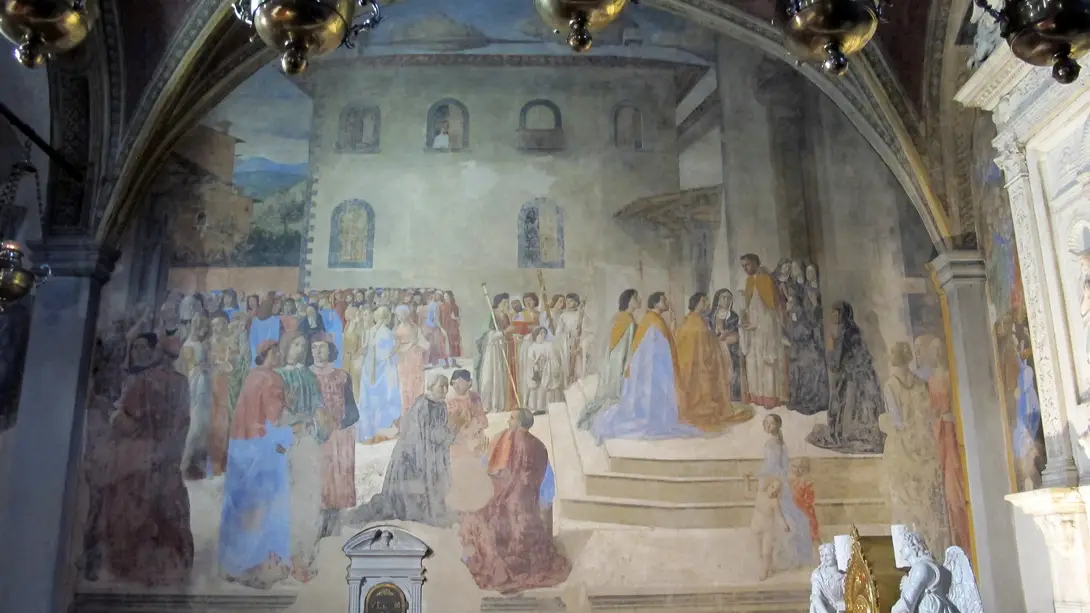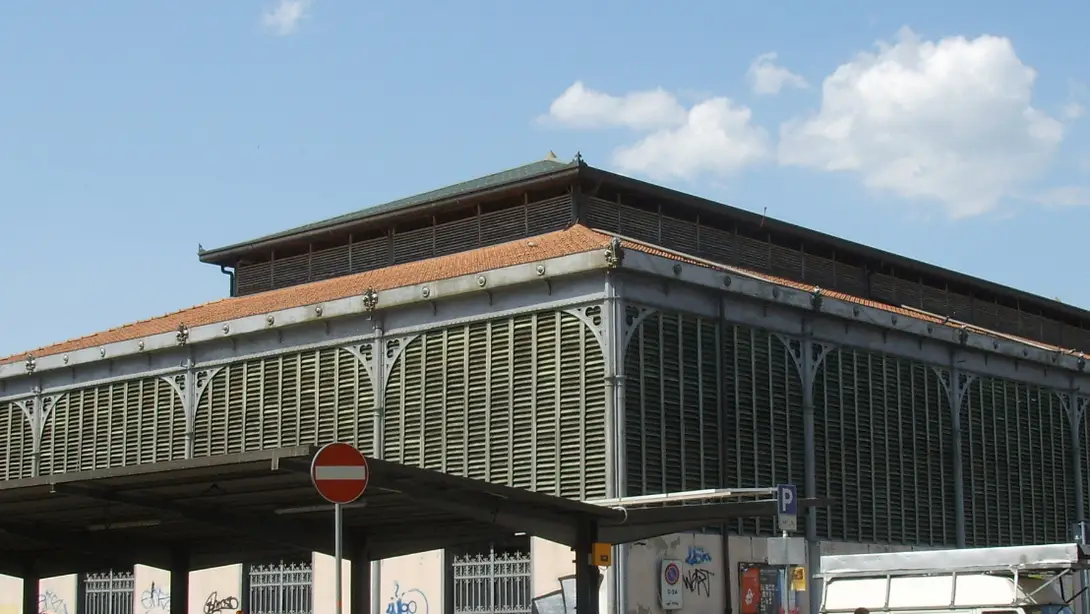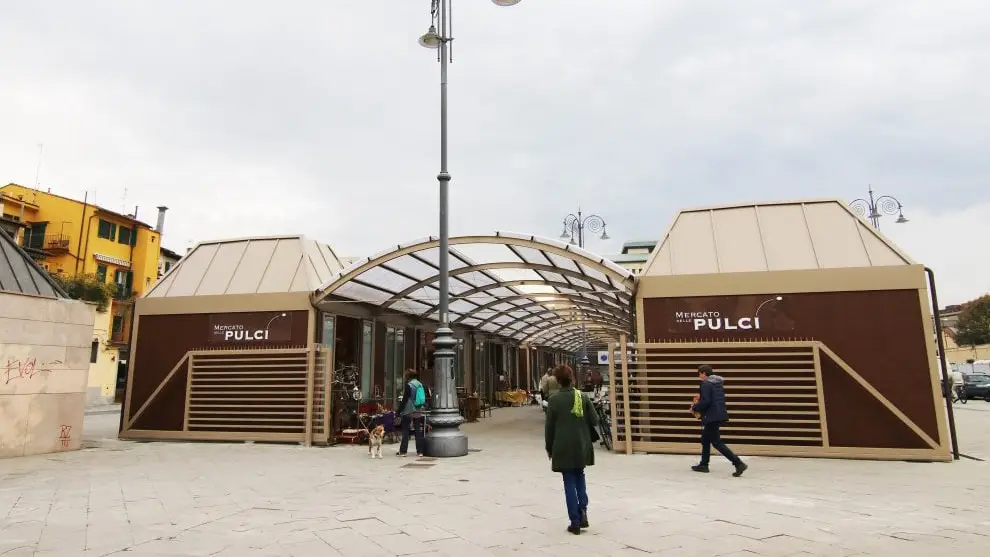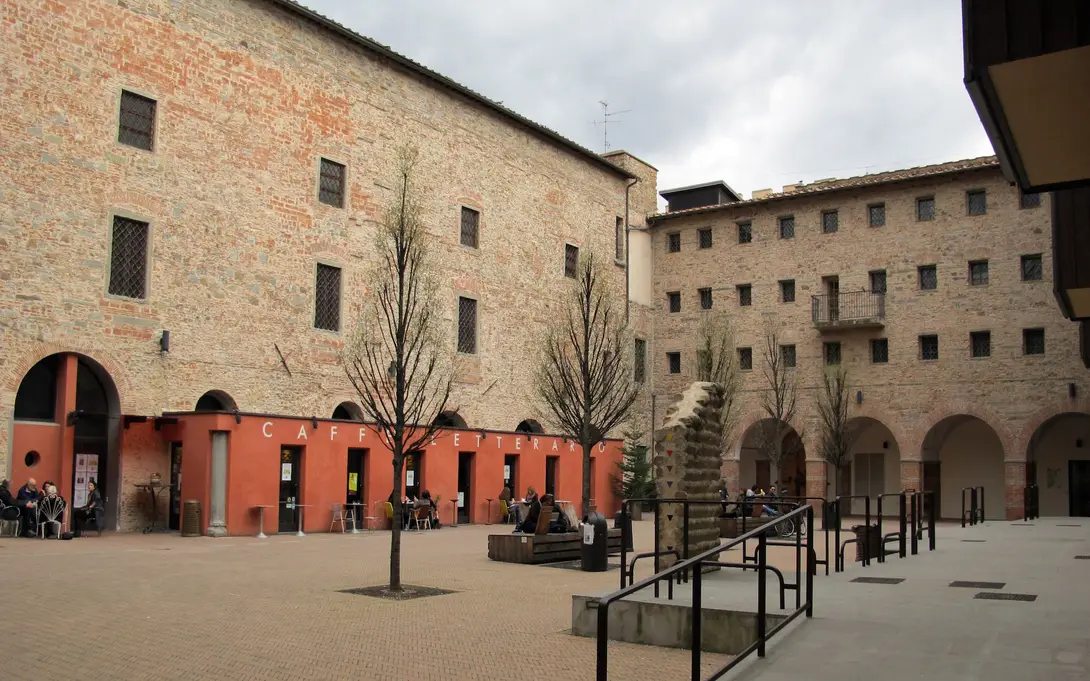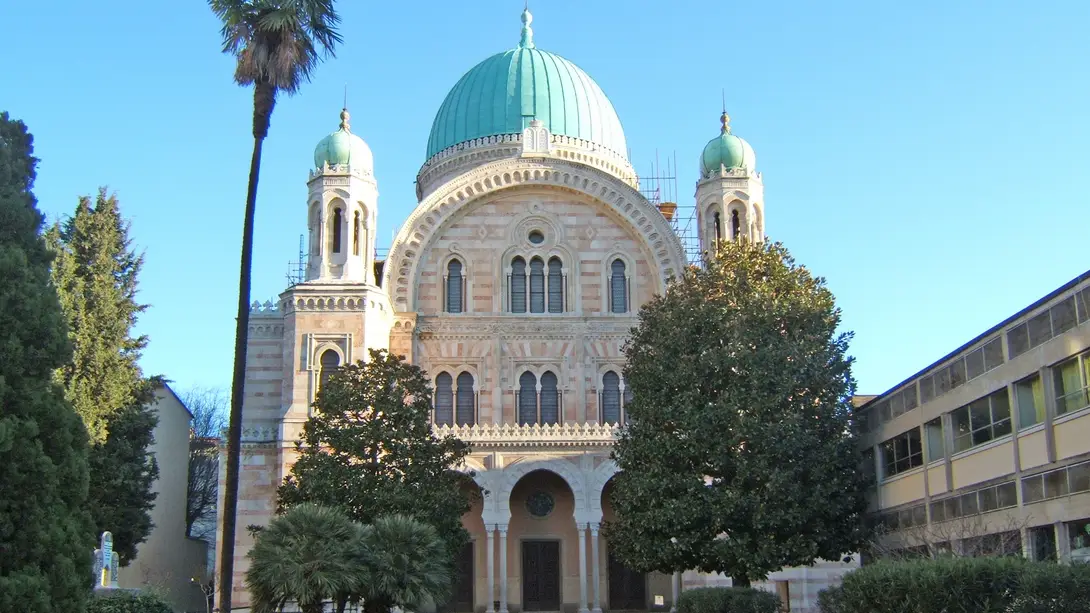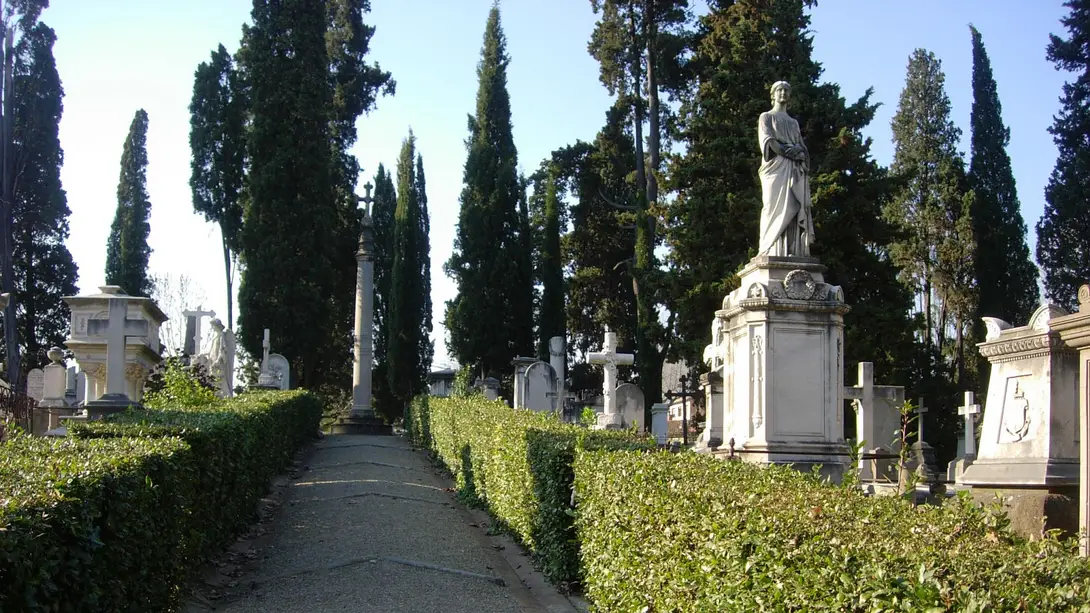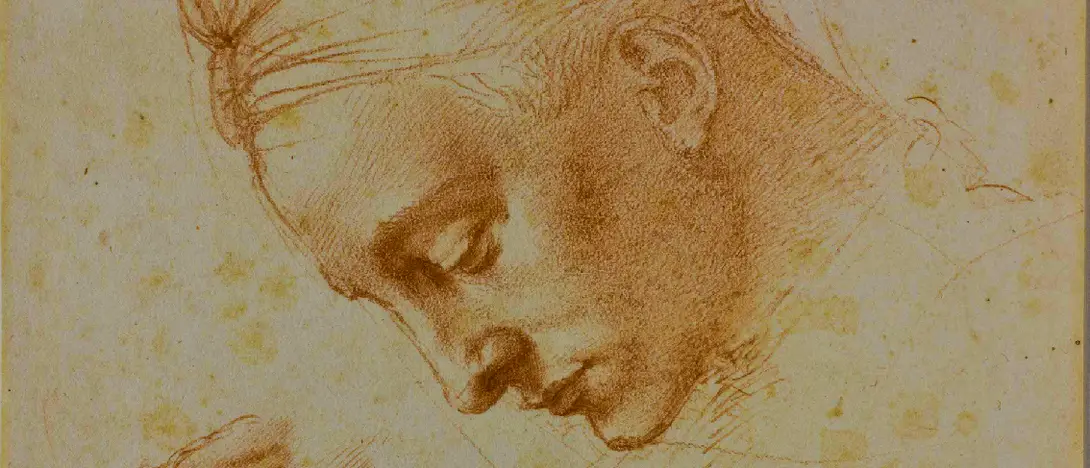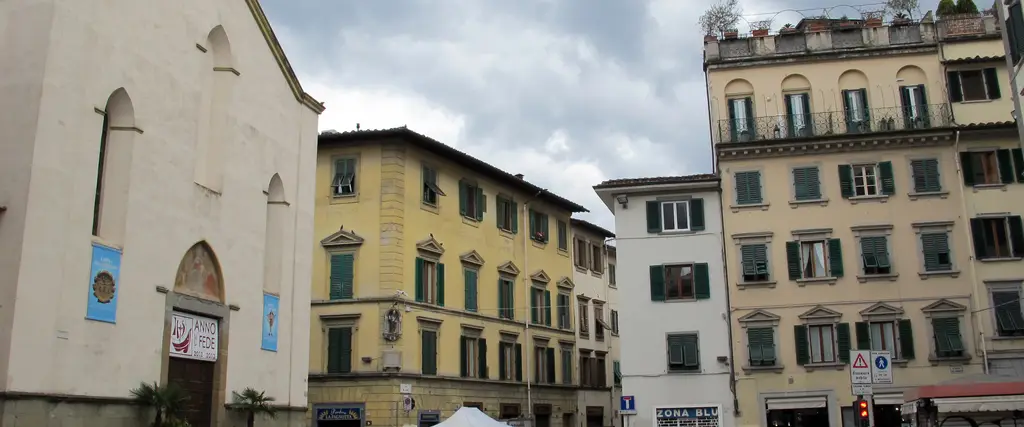
From Santa Croce to Sant'Ambrogio
Thanks to this itinerary, starting from Piazza Santa Croce (with its worldwide famous Basilica) we'll discover the Sant'Ambrogio district, a lively area with its own identity, which has remained more authentic than other places in the city.
It is a meeting place of cultures and religions: a short distance away from the Church of Sant'Ambrogio - which gives name to the entire neighborhood - are the Synagogue, the islamic place of worhip, the English Cemetery Cemetery. It is also an area of markets (the historic Sant'Ambrogio market and the nearby Flea Market), both within walking distance steps from the interesting Murate complex (former new life prison returned). It is also a "young" district, due to the numerous pubs in the area and the presence of a university department. The origins of the neighborhood are popular: here there was an important brick production centre, also remembered by the toponym of Via della Mattonaia.
Another topical place is Piazza dei Ciompi dominated by Vasari's Loggia del Pesce; not far from here, in via Ghibellina, there is Casa Buonarroti, a prestigious museum which preserves some of Michelangelo's early works.
This area is also rich in Tabernacles, with fascinating histories. The neighborhood of Santa Croce & Sant'Ambrogio is bordered to the east by the Mint Tower, the place where the famous Fiorino was minted, but also part of the city's defensive system, made up of towers, gates & fortresses. .
Die Orte
Etappen
Chiesa di Sant'Ambrogio
The church of Sant'Ambrogio is in the part of the city having this name. It is an old church rebuilt in the late 13th century.
The interior has pretty Renaissance side altars. It is worth a visit for the Chapel to the left of Sanctuary, called the Cappella del Miracolo that contains a tabernacle by Mino da Fiesole - who is buried here. The frescoes by Cosimo Rosselli are interesting because showing a procession with the chalice in front of the church, it shows faces and scenes of Florence and many of the artist's contemporaries.
Sant'Ambrogio Market
The covered market of Sant'Ambrogio hosts food shops and like the San Lorenzo market dates back to the end of 19th century when a complete new design of the historic centre has been put on.
In 1860 Florence became the new capital of the Kingdom of Italy and took on its present appearance, clearly inspired by the great European capitals, Paris first.
The construction of new markets was the main project of the new concept of the city. The market of Sant' Ambrogio, built in the large vegetable garden in the block beyond Santa Croce towards the walls, with a cast iron structure, was inaugurated in 1873 about a year before than San Lorenzo market.
The covered market is the very beating heart of the neighbourhood; outside the building all around the market more stalls can be found with different items such as flowers, clothes, household objects.
Mercato delle Pulci - Flea Market
The Mercato delle Pulci (Flea Market) recently moved in this new location: Piazza Annigoni.
Small antiques market, Vintage selection, Modern/antiques. Stands of second-hands books. Various publications of the twentieth century even pre-1950s. Vinyl.
Le Murate
In the former Florentine prison of the Murate, in the area between Santa Croce and the viali di circonvallazione (ring roads), an urban upgrading plan has been implemented on the basis of a project by architect Renzo Piano. The result of that has been the creation of a housing complex, two new squares (Piazza Madonna della Neve and Piazza delle Murate), a covered gallery where visitors can find art galleries, a book shop and the well-known Box Office, besides two popular bars, a pizzeria restaurant and a Literary Café.
Jewish Museum and Synagogue
The Synagogue
Inaugurated in 1882, the Florence Synagogue is considered one of the most beautiful in Italy and is characterised by its large copper-green dome, part of the Florentine skyline.
It was built following the ‘redevelopment’ of the area corresponding to today's Piazza della Repubblica (at the time of Florence's capital, 1865-71), where the ghettowith two synagogues used to be. The new project, to be built in the area of Piazza d'Azeglio, was commissioned to Marco Treves by David Levi.
It is a Moorish-style complex with a central plan, elegantly clad in travertine and pink pomato, with a large central dome, clad in copper, and side towers with small domes on the façade. The impressive interior of the synagogue, illuminated by polychrome stained-glass windows, is entirely covered with decorative arabesque motifs, originally illuminated in gold, and rich mosaics; the upper part opens onto the women's galleries. Fortunately, at the time of the Nazi occupation, the temple was not seriously damaged.
The Jewish museum
The first sections of the museum focus on the history of the Jews in Florence down the centuries and their relationship with the city. Then there are various objects and furnishings used for worship in the home, the most significant ones for illustrating important feasts and moments in life. The last room contains exhibits of photographic and archive documents that shed light on the life of the Florentine Jews. Inside the oriental garden, where the complex stands, there is a plaque with the names of 248 Jewish residents of Florence killed by the Nazis.
The admission ticket also includes entry to the Synagogue on the ground floor.
English Cemetery
Situated on a mound in the middle of Piazzale Donatello, the Protestant cemetery was used between 1827 and 1877. The tombs are not arranged in orderly rows but in a rather Romantic fashion accentuated by the contours of the terrain. Philosophers, artists and writers, including Elizabeth Barrett Browning, are buried here.
The English Cemetery is one of the monumental cemeteries of Florence.
Loggia del pesce & Piazza de' Ciompi
The Loggia del Pesce (fish loggia) which is located today in Piazza dei Ciompi, is a project by Giorgio Vasari commissioned by Grand Duke Cosimo I de' Medici in 1567.
The loggia was intended to house the fish sellers who, with the construction of the Vasari Corridor, had lost their position on the banks of the Arno and were moved to where via Pellicceria is now located. Whe Florence became Capital of Italy (1865-1871) this position also became an obstacle during the rehabilitation works of the ghetto and the construction of the current Piazza della Repubblica. The loggia was then dismantled and only in 1956 rebuilt again in Piazza dei Ciompi, without its original function but with the original materials, in particular in the spandrels of the arches there are tondos depicting different species of fishes. At number 11 a plaque commemorates the home of Lorenzo Ghiberti, author of the famous Door of Paradise of the Florentine Baptistery.
Recently Piazza dei Ciompi (which takes its name from the "minor workers" of the wool art, protagonists of the famous riot of 1378), after the transfer of the Flea Market to Piazza Annigoni, has been the subject of an important redevelopment and often hosts events of various kinds.
Fondazione Casa Buonarroti
The Museo di Casa Buonarroti is to all intents and purposes the temple of Michelangelo's memory.
Acquired by Michelangelo Buonarroti himself around 1510, the property only became central to the Buonarroti family in the 17th century, when the palace took on its current appearance. It was in fact thanks to his great-grandson Michelangelo the Younger, a prominent figure in 17th-century Florentine culture, that this house was decorated with paintings celebrating the family glory, to which four rooms were dedicated.
The core of the collection are Michelangelo's autograph works: exraordinary early sculptures such as the Madonna of the Staircase, the Battle of the Centaurs; the display includes Etruscan and Roman sculptures, Renaissance and 17th-century paintings, Della Robbia glazed terracotta. The great Master is also responsible for the large wooden model for the façade of San Lorenzo Church and the River God, a sketch for the New Sacristy (Medici Chapel Complex).
Thanks to the curatorship of the Fondazione Casa Buonarroti, the museum has an intense exhibition activity, and groups of Michelangelo's drawings are also temporarily exhibited in rotation.
